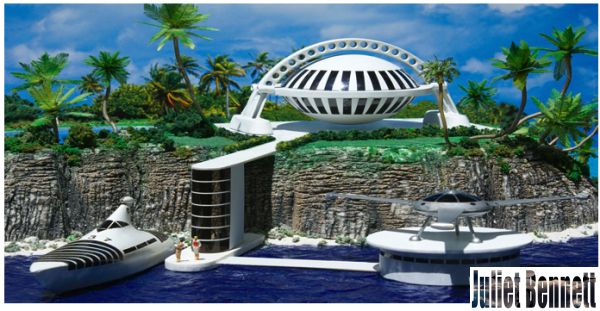 While in a recent entry I concluded that I simply need to accept the world as it is, today I wonder, does this mean accepting the projectory of the world’s future? If we have the foresight to see that the present path we are on has the potential to destroy humanity-on-earth, do we have a responsibility to pave a new path?
While in a recent entry I concluded that I simply need to accept the world as it is, today I wonder, does this mean accepting the projectory of the world’s future? If we have the foresight to see that the present path we are on has the potential to destroy humanity-on-earth, do we have a responsibility to pave a new path?
I think yes, we do.
I think that what Deepak is saying is that the uncovering of a new path begins with an acceptance of the past – an acceptance of the inequalities exist today – and an awareness of our culturally conditions definitions of good and bad. That’s where it starts. Accept the world as it is, for now.
Then, and only then, can we begin to predict possible futures and work toward the most desirable one. And so I ponder: what does a desirable future look like? And what kind of path might take us there?
Before I went to India I wrote an entry that talked about the “Changing the Dream” initiative, that looked at how we can to redefine our values and the place of money in our life ambitions. (Click here to revisit entry: “Where are we, where are we going, and how.“). This entry and this initiative still stand strong. It’s the motivation behind this, for me, which has changed.
While I have returned with a far less idealistic perspective, I have not lost my optimism altogether. I have lost my altruism. I have a more realistic optimism and and more self-centred motivation julietnow.
Capitalism has many points that can be improved upon. The perception of people as resources, commodities to be profited from, and earth as here for our exploitation and destruction, are two components that not good for any body’s conscience, or any body’s future.
Physical, sexual and mental slavery (of people at all economic levels), war, poverty, over-population, unhappiness, loneliness, and lives run by an obsessions with money, are also elements of capitalism that I believe can and need to be to be addressed.
How? How can such things be addressed? Are they embedded in the capitalistic model? Do we need a new model or can we adjust our current one?
My favourite professor Johan Galtung, who I met and chatted with at the International Peace Research Association conference last week, takes what I believe to be the best approach to conflict resolution I’ve ever heard of. It’s called the TRANSCEND model, and it can be applied to anything. It involves deeply exploring the roots of the problems,separating the conflicting people from the conflicting goals, and then thinking creatively about a solution that neither parties have thought about, but which transcends the conflict in it’s entirety.
It all starts with a vision.
Solutions to the world’s problems requires us to imagine what we WANT the world to look like:
What long-term vision to we have for humanity on this planet? How many people live in each country? Do we still have “countries” and “passports” or are we free to be citizens of the planet? What kind of diversity still exists between our races? What do we do for fun? Do we still work? Have a career? What place does technology have in our lives? Do we still use money? Still many currencies or just a few? Do we care about owning houses and shares? Does the share market still exist? How do we express our creativity? How many rainforests have survived? Do we have enough water? How clean is our air? What do we eat? How do we interact with each other?
The post-India me is still interested in the future. A realistic future. An amazing future. And to get there we need that vision. The new paradigm I see the word through is dreaming of a better world, one that lies in our own personal interests, and one that doesn’t seem completely impossible.
Picture:
A possible future that is “Beyond Poverty, Politics & War” might be The Venus Project – www.thevenusproject.com – Designs by Jacque Fresco – Models and photos by Jacque Fresco & Roxanne Meadows.
No Comments Yet